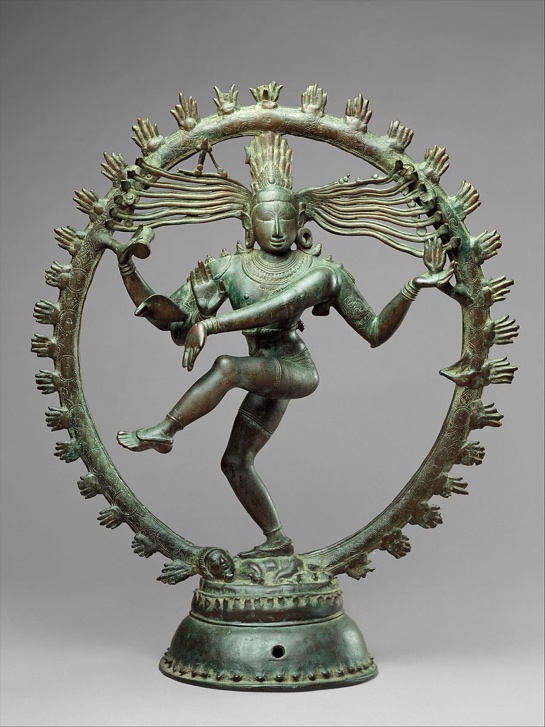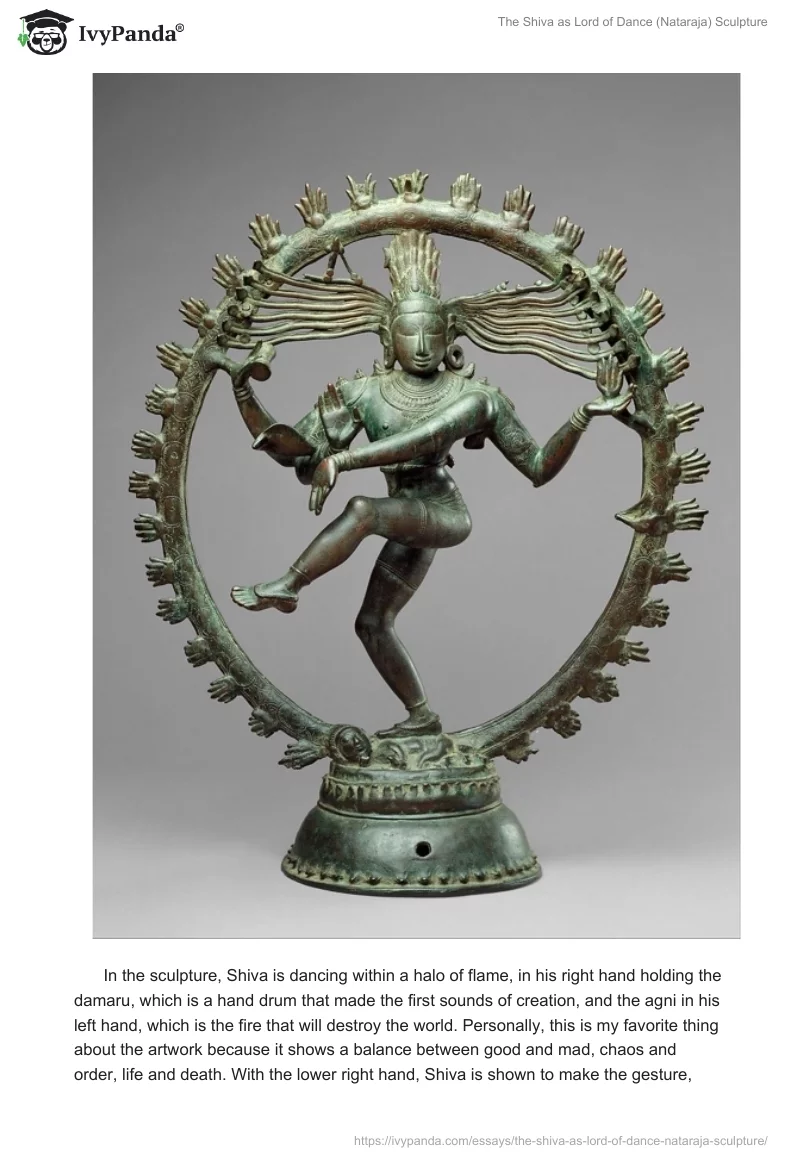Shiva as Lord of Dance (Nataraja) is a sculpture of the ancient god Shiva that combined in himself several roles, such as the creator, preserver, and destroyer of the universe. Within Indian theology, Shiva is an integral symbol that represents the never-ending cycle of life.

In the sculpture, Shiva is dancing within a halo of flame, in his right hand holding the damaru, which is a hand drum that made the first sounds of creation, and the agni in his left hand, which is the fire that will destroy the world. Personally, this is my favorite thing about the artwork because it shows a balance between good and mad, chaos and order, life and death. With the lower right hand, Shiva is shown to make the gesture, which is called abhayamudra, that should alleviate fear, while the figure that looks like a dwarf that is being trampled by the deity’s right foot represents apasmara purusha, which is the illusion that makes the humankind lose itself. The front left hand of Shiva, which is pointing to his raised foot in the dance, is a symbol of support for the troubled souls. Therefore, Shiva is dancing to spread his energy around him, as signified by his hair flying to the sides. The symbolism of the sculpture is that by believing in Shiva and his power, his followers can achieve salvation.


